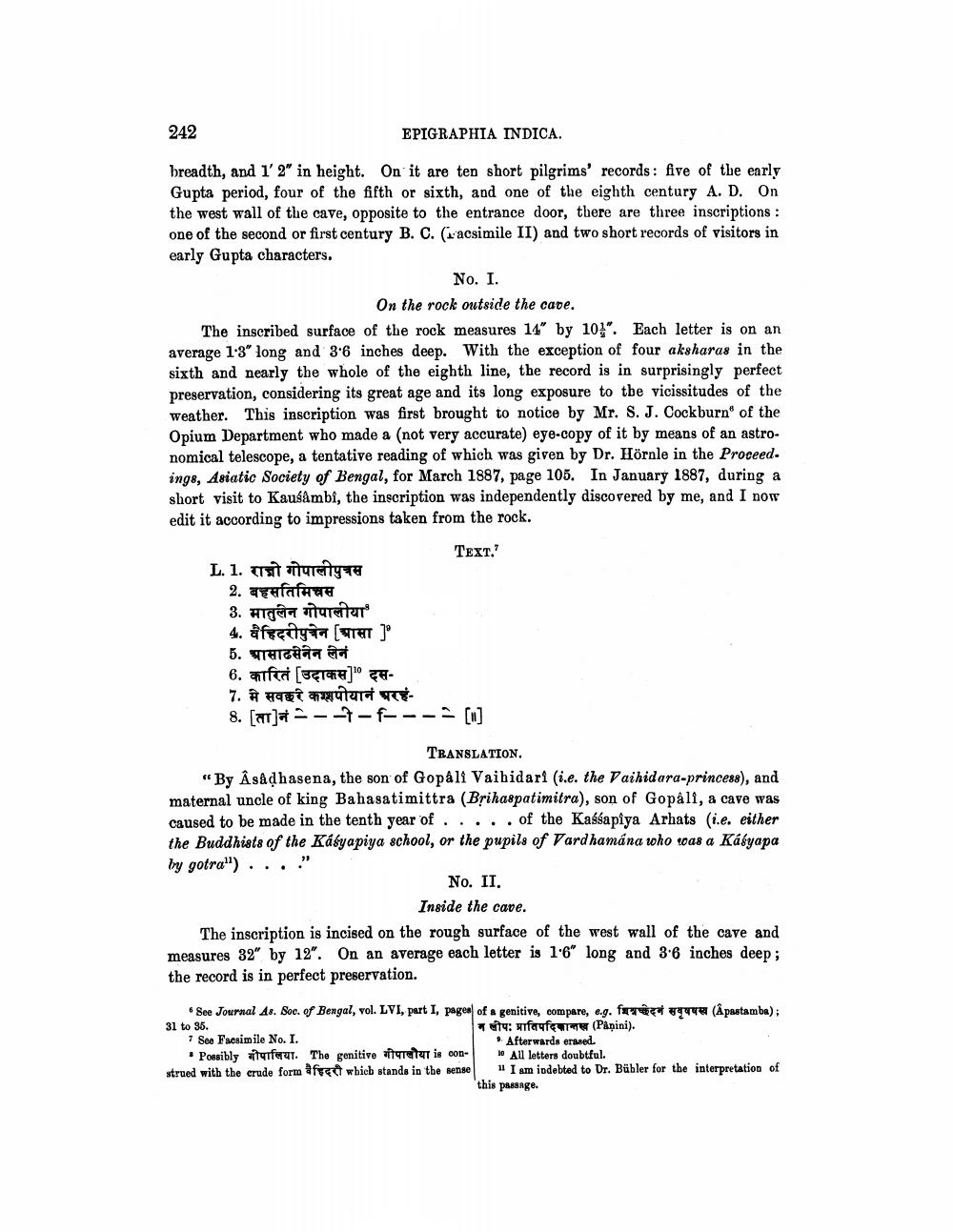________________
242
EPIGRAPHIA INDICA.
breadth, and 1' 2" in height. On it are ten short pilgrims' records: five of the early Gupta period, four of the fifth or sixth, and one of the eighth century A. D. On the west wall of the cave, opposite to the entrance door, there are three inscriptions: one of the second or first century B. C. (acsimile II) and two short records of visitors in early Gupta characters.
No. I.
On the rock outside the cave.
The inscribed surface of the rock measures 14" by 10". Each letter is on an average 1.3" long and 36 inches deep. With the exception of four aksharas in the sixth and nearly the whole of the eighth line, the record is in surprisingly perfect preservation, considering its great age and its long exposure to the vicissitudes of the weather. This inscription was first brought to notice by Mr. S. J. Cockburn" of the Opium Department who made a (not very accurate) eye-copy of it by means of an astronomical telescope, a tentative reading of which was given by Dr. Hörnle in the Proceedings, Asiatic Society of Bengal, for March 1887, page 105. In January 1887, during a short visit to Kausâmbî, the inscription was independently discovered by me, and I now edit it according to impressions taken from the rock.
TEXT.'
L. 1. citaturitywe
2. बहसतिमिचस
3. मातुलेन गोपालीया
4. fvety* (rer]'
5. आसाढसेनेन लेन
6. कारितं [उदास" दस
7. मे सवछरे कश्शपीयानं अरहं8. [ar] -f
-=[]
TRANSLATION.
"By Asâḍhasena, the son of Gopali Vaihidarî (i.e. the Vaihidara-princess), and maternal uncle of king Bahasatimittra (Brihaspatimitra), son of Gopali, a cave was caused to be made in the tenth year of . . . . . of the Kaśśapiya Arhats (i.e. either the Buddhists of the Kásyapiya school, or the pupils of Vardhamana who was a Kasyapa by gotra").
No. II. Inside the cave.
The inscription is incised on the rough surface of the west wall of the cave and measures 32" by 12". On an average each letter is 16" long and 36 inches deep; the record is in perfect preservation.
6 See Journal As. Soc. of Bengal, vol. LVI, part I, pages of a genitive, compare, e.g. fa que (Âpastamba); 31 to 35. न लोपः प्रातिपदिकान्तख (Panini).
7 See Facsimile No. I.
9. Afterwards erased.
10 All letters doubtful.
• Possibly गोपालिया. The genitive गीपालीया is construed with the crude form af
which stands in the sense
11 I am indebted to Dr. Bühler for the interpretation of passage.
this




